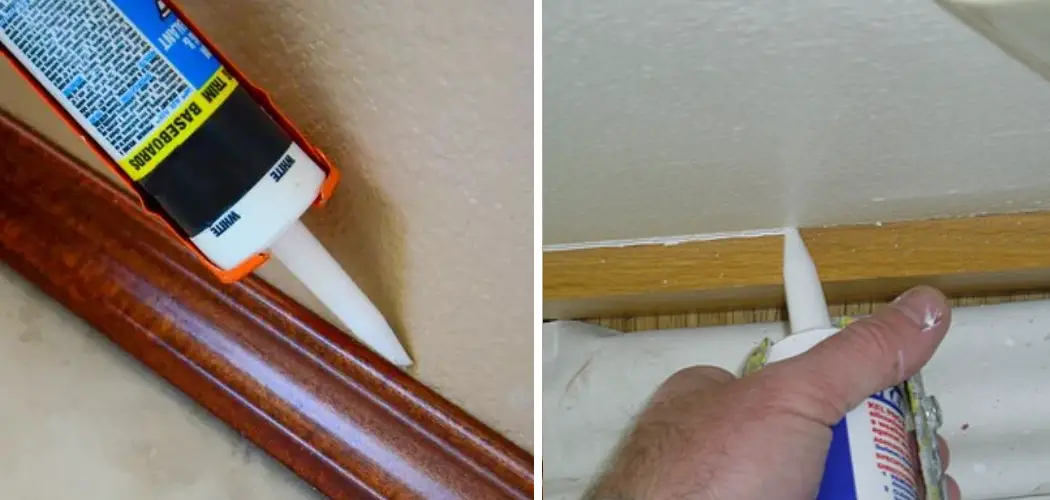Caulking wood trim is an important part of home maintenance. It helps to seal the trim and prevent water damage. If you have stained wood trim, it’s important to use a caulk that will match the color of the trim. Caulking stained wood trim can be a great way to make it look new again.
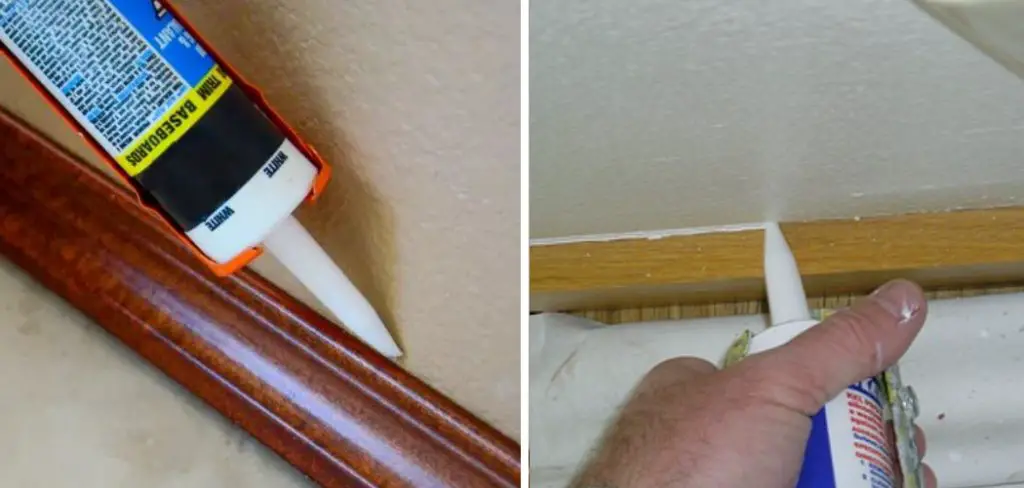
However, it’s important to use the right type of caulk for the job. In this blog post, we’ll show you how to caulk stained wood trim and give you some tips on what to avoid. We’ll also provide a few recommendations for the best caulks to use for this project. Let’s get started!
10 Steps on How to Caulk Stained Wood Trim:
Step 1: Prepare the Surface.
The first step in caulking stained wood trim is to prepare the surface. This means removing any old caulk that is present and cleaning the surface of dirt and debris. A putty knife can be used to remove the old caulk, and a stiff brush can be used to clean the surface.
Step 2. Cut the Tip of the Caulk Tube.
Once the surface is prepared, the next step is to cut the caulk tube’s tip. The size of the hole should be small enough so that only a small amount of caulk will be dispensed at a time. Make sure that the hole is cut at a 45-degree angle. If the hole is too big, the caulk will come out too fast and will be difficult to control.
Step 3. Apply the Caulk.
Now it’s time to apply the caulk. Place the tube of caulk in the caulking gun and position the tip of the tube at the joint that you want to fill. Apply even pressure as you move the caulking gun along the joint. Be sure to fill any voids or cracks completely.
Step 4. Smooth the caulk.
After the caulk has been applied, use your finger or a putty knife to smooth it out. This will help to ensure that there are no air bubbles present and that the caulk adheres properly to both surfaces. If you are using a putty knife, be sure to wipe it off on a rag frequently so that it does not become filled with caulk.
Step 5. Use a Wet Finger to Smooth Out the Caulk.
Once you have dispensed a small bead of caulk, use your wet finger to smooth it out. Start at one end and work your way to the other, making sure to wipe away any excess caulk as you go. If you find that the caulk is too thick, you can always go back and thin it out with a wet rag. Make sure to smooth out any bubbles that may have formed.
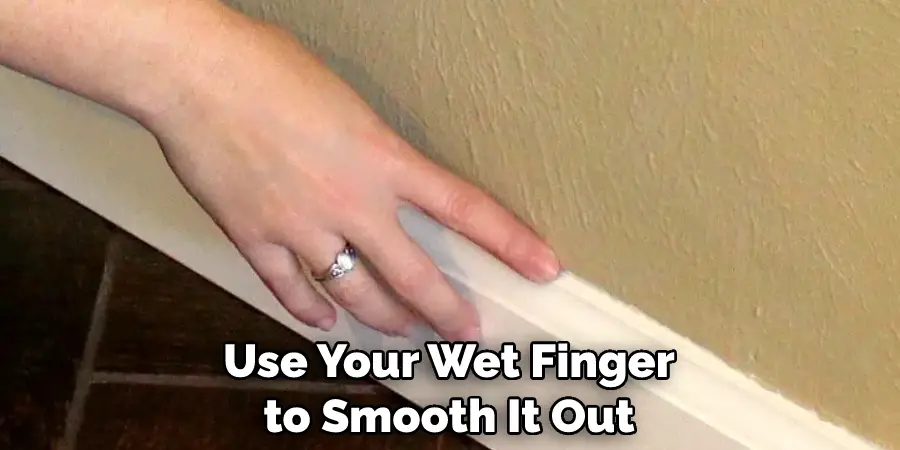
Step 6. Remove the Masking Tape Immediately.
After smoothing out the caulk, remove the masking tape immediately before it has a chance to dry in place. If you wait too long, it will be very difficult to remove without damaging the surface underneath. If you are working with a delicate surface, you may want to use a putty knife to help remove the tape.
Step 7. Allow the Caulk to Dry Completely.
Once all of the masking tapes have been removed, allow the caulk to dry completely before moving on to the next step. This usually takes about 24 hours for most types of caulks. If you are in a hurry, you can use a hair dryer to speed up the process. Make sure that the caulk is completely dry before proceeding.
Step 8. Apply Painter’s Tape if Necessary.
If you are painting over the caulked area, you will need to apply painter’s tape to the surface before beginning. This will help to ensure a clean line and prevent the paint from getting on the caulking. Apply the tape carefully and press it down firmly so that it adheres well to the surface. If you are not painting, you can skip this step.
Step 9. Apply a Clear Sealant.
After the paint or stain has dried, a clear sealant can be applied over the top. This will help to protect the caulk and make it last longer. Apply the sealant with a brush or a roller, and make sure to cover the entire surface. Allow the sealant to dry completely before moving on. If you are painting, you can apply the sealant after the paint has dried. Make sure to follow the instructions on the sealant can for the best results.
Step 10. Enjoy Your Newly Caulked Surface.
After following these steps, you should have a beautiful, newly caulked surface that will last for years to come. Be sure to take care of it by regularly cleaning and sealing it, and it should give you many years of use. If you find that the caulk begins to crack or peel, simply remove it and start the process over again. Thanks for reading, and enjoy your newly caulked surface!
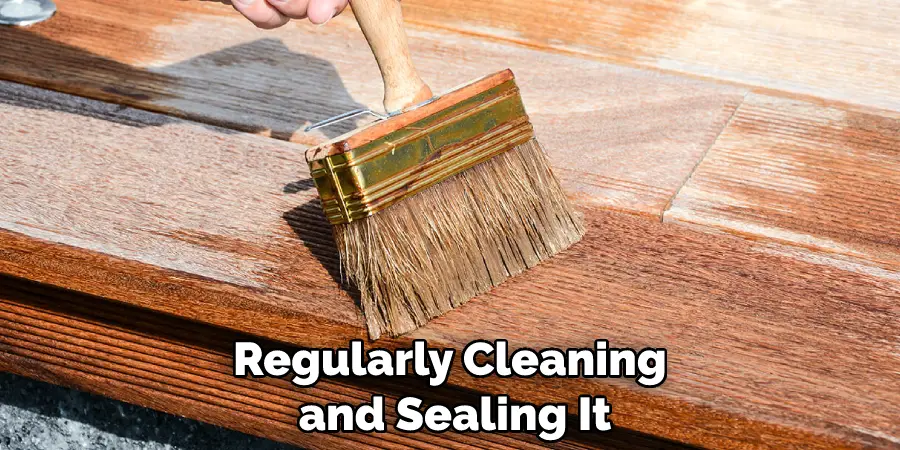
10 Things to Consider While Caulking Stained Wood Trim
- Use high-quality caulk.
- Remove all old caulk before applying the new caulk.
- Use a caulk gun for the best results.
- Cut the tip of the caulk tube at a 45-degree angle.
- Apply the caulk to the joint in a continuous bead.
- Use your finger or a putty knife to smooth the bead of caulk.
- Wipe away any excess caulk with a damp cloth.
- Allow the caulk to dry for at least 24 hours before painting or staining.
- If you’re painting, use a primer before painting over the caulking.
- If you’re staining, use a pre-stain conditioner before staining the caulking.
5 Precautions You Can Take
1. Wipe away any loose debris or dirt from the surface of the trim with a clean, dry cloth before caulking. This will help ensure that the caulk adheres properly to the trim.
2. If the trim is particularly dirty, you may need to scrub it with a mild soap and water solution before caulking.
3. Use a high-quality, stain-resistant caulk for the best results.
4. Apply the caulk in a smooth, even bead, taking care to fill any gaps or cracks completely.
5. Smooth the bead of caulk with a damp cloth or your finger immediately after application. Allow the caulk to dry completely before applying any paint or varnish over it.
How Do You Caulk Stained Wood Baseboards?
Stained wood baseboards can be a beautiful addition to any room, but they require special care when it comes time to caulk. Unlike painted trim, stained wood is more likely to show through the caulk if not applied correctly. Follow these tips to get the best results:
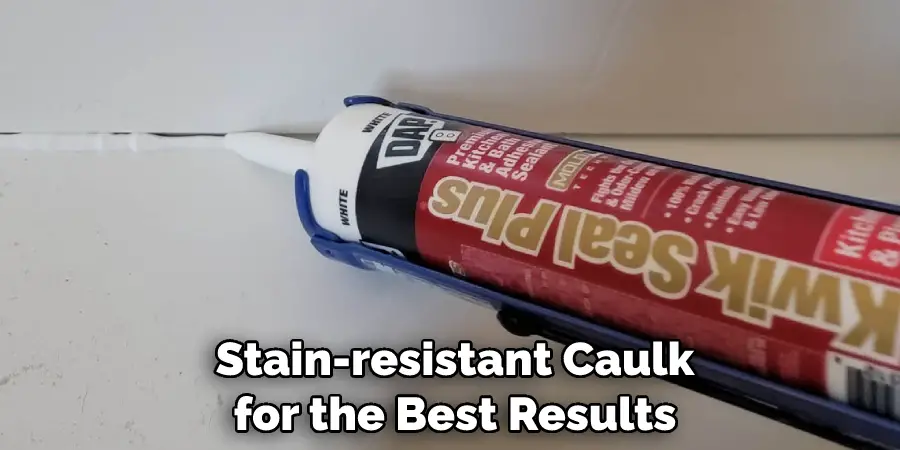
1. Wipe away any loose debris or dirt from the trim’s surface with a clean, dry cloth before caulking. This will help ensure that the caulk adheres properly to the trim.
2. If the trim is particularly dirty, you may need to scrub it with a mild soap and water solution before caulking.
3. Choose a high-quality, stain-resistant caulk for the best results.
4. Apply the caulk in a smooth, even bead, taking care to fill any gaps or cracks completely.
5. Smooth the bead of caulk with a damp cloth or your finger immediately after application. Allow the caulk to dry completely before applying any paint or varnish over it.
Can You Caulk Over Old Caulk?
In most cases, yes. However, there are a few things you need to keep in mind before caulking over old caulk:
- The surface should be clean and dry before you begin. This means wiping away any dirt, dust, or debris that might be on the surface.
- The old caulk should be in good condition, without any cracks or gaps. If there are any cracks or gaps, you’ll need to remove the old caulk completely and start from scratch.
- You may need to use a utility knife or other sharp object to score the surface of the old caulk before applying the new caulk. This will help the new caulk adhere properly to the surface.
- When applying the new caulk, smooth it out immediately after application. Allowing the new caulk to dry before smoothing it out can cause it to become difficult to remove later on.
- Allow the new caulk to dry completely before painting or to varnish over it.
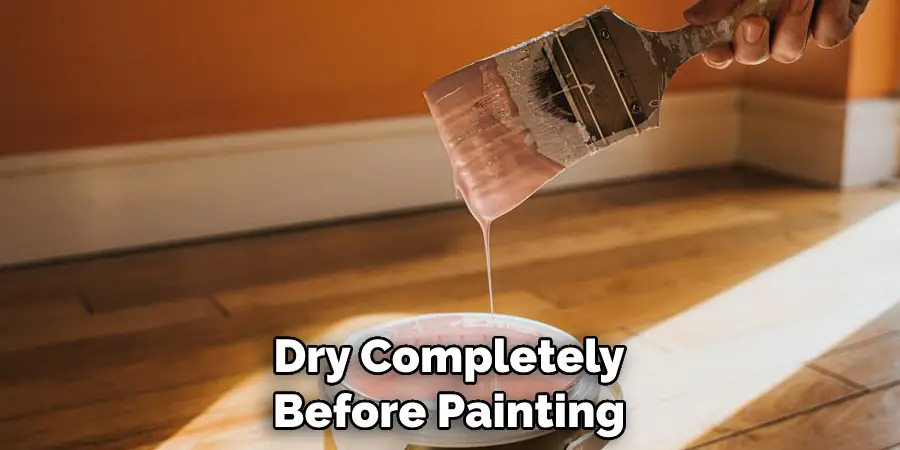
Conclusion
Now that you read the whole article about how to caulk stained wood trim, caulking stained wood trim is easy with these simple tips! Be sure to clean the surface before you start, use a good-quality caulk, and apply it in thin beads. With a little time and effort, you’ll have caulked stained wood trim that looks great and protects your home from moisture damage.
When caulking stained wood trim, always use a high-quality acrylic latex caulk. Apply the caulk with a gun, being sure to smooth it out as you go. By following these simple steps, you’ll ensure that your caulking job looks professional and lasts for years to come.

